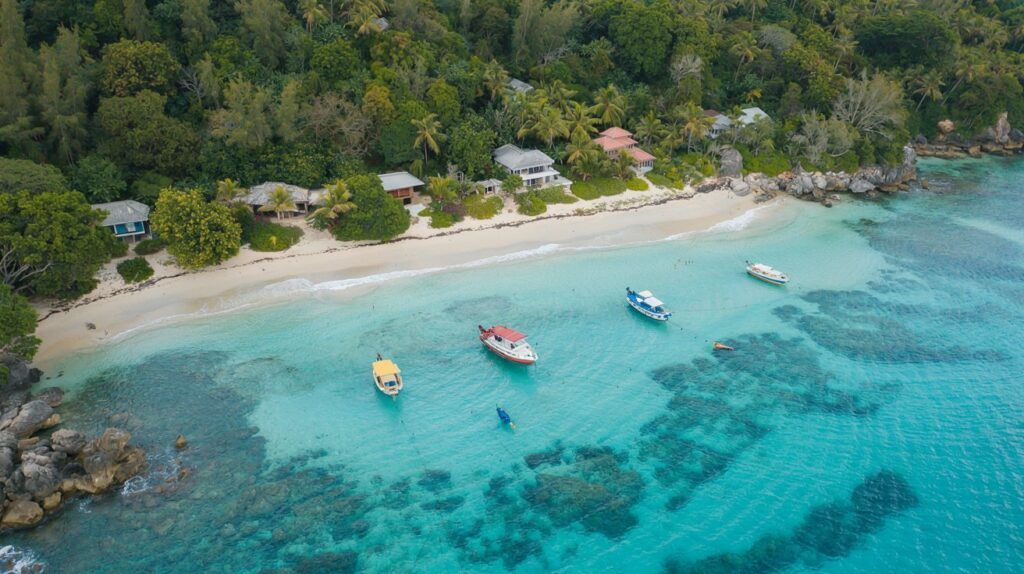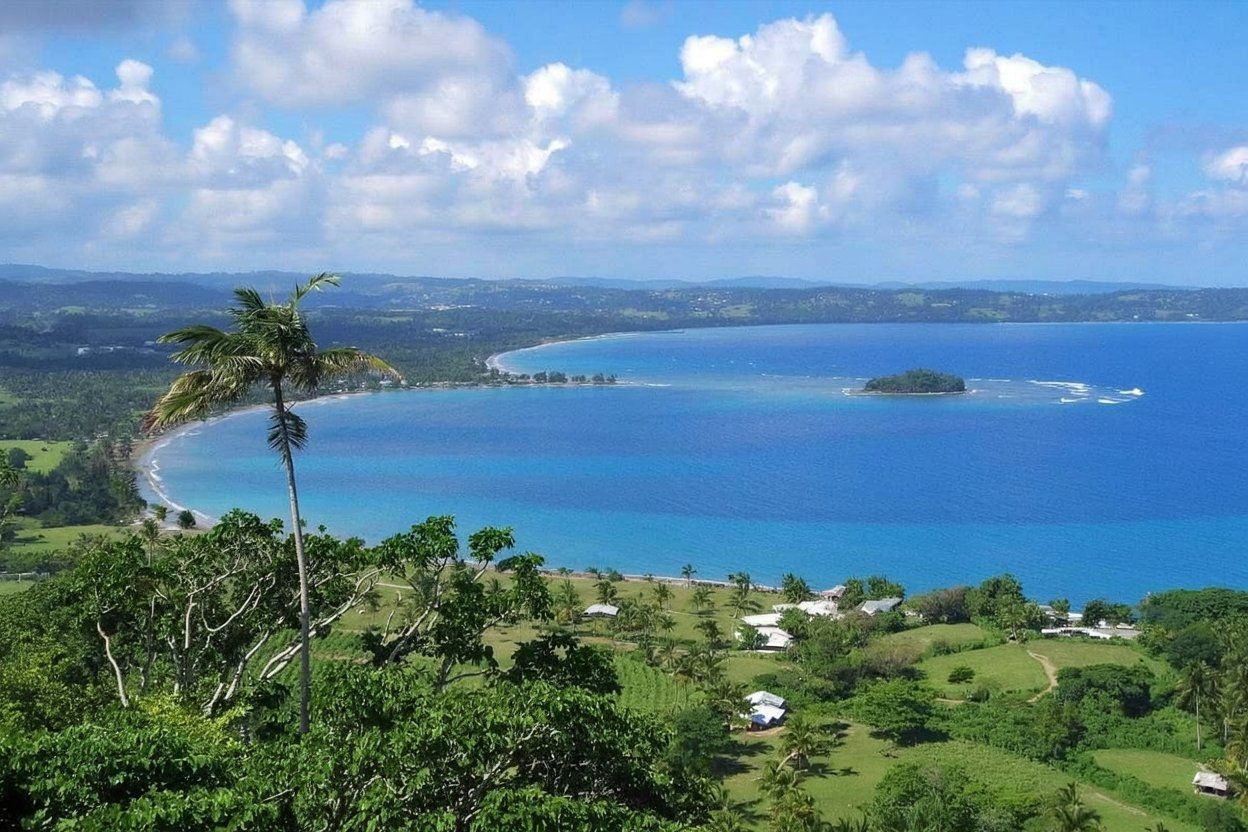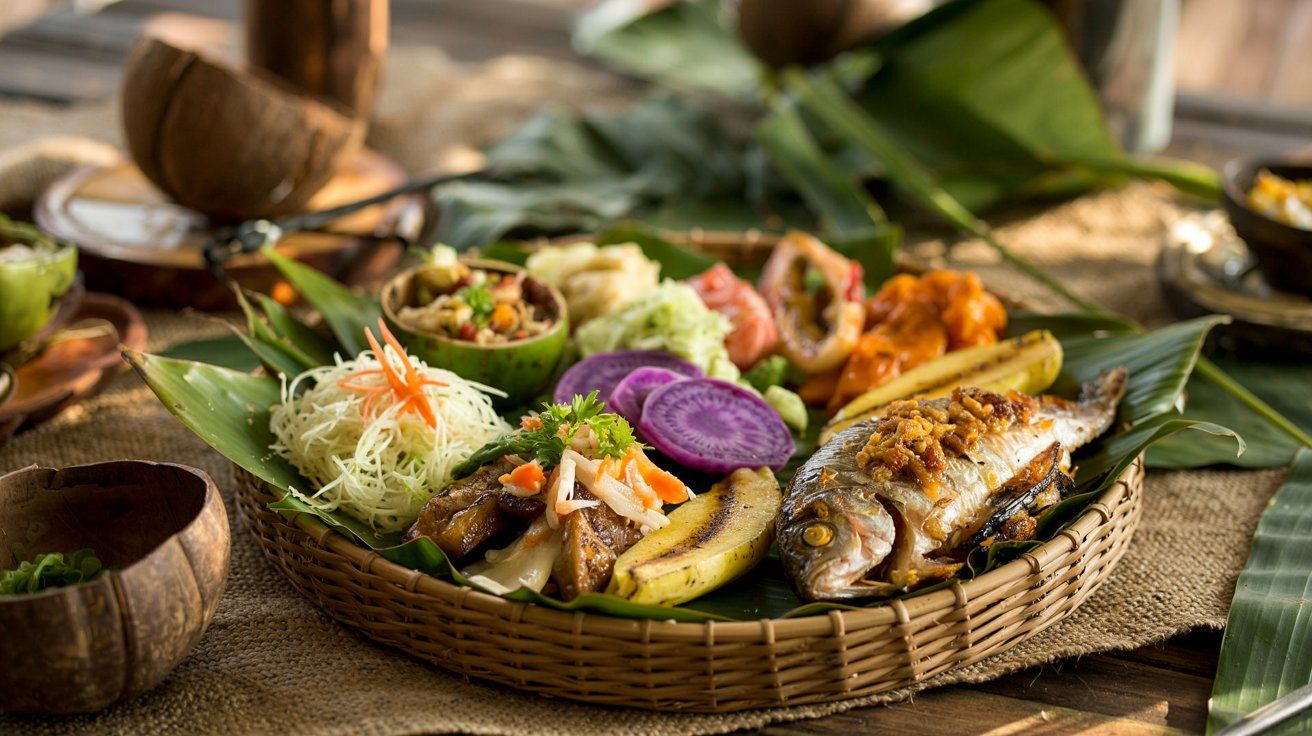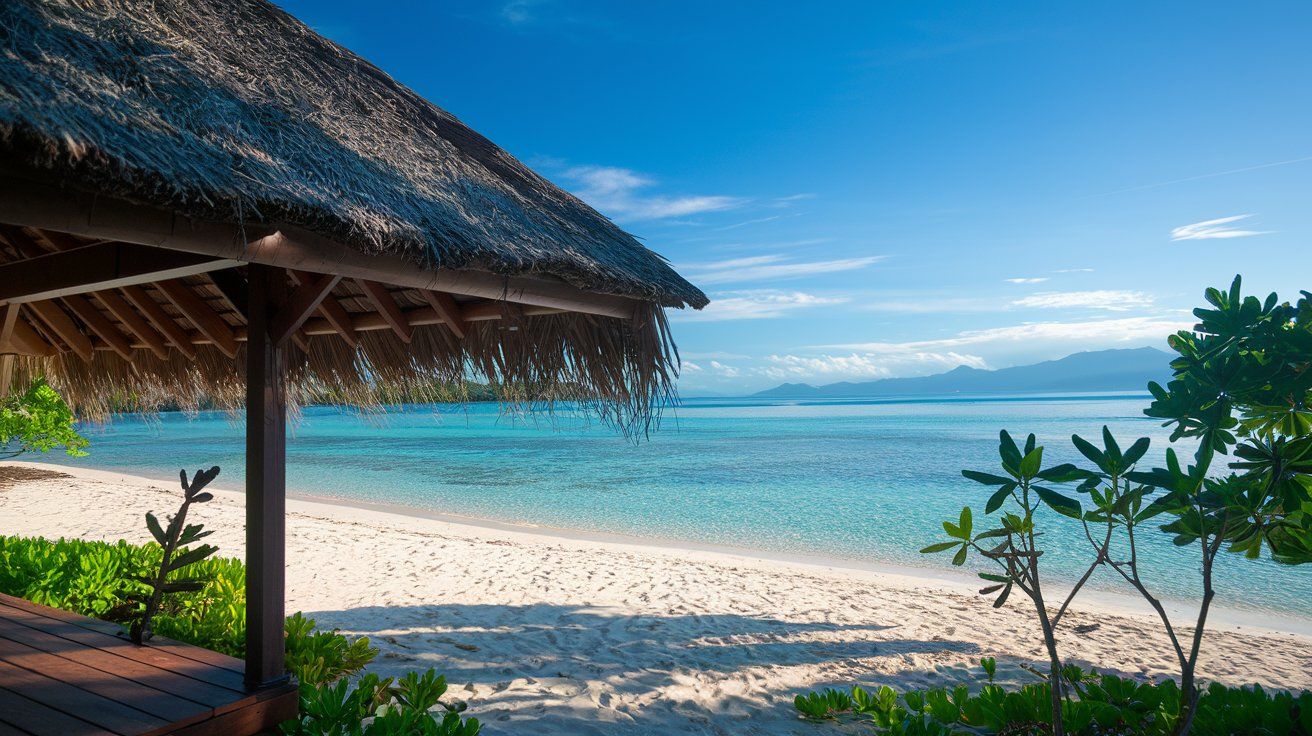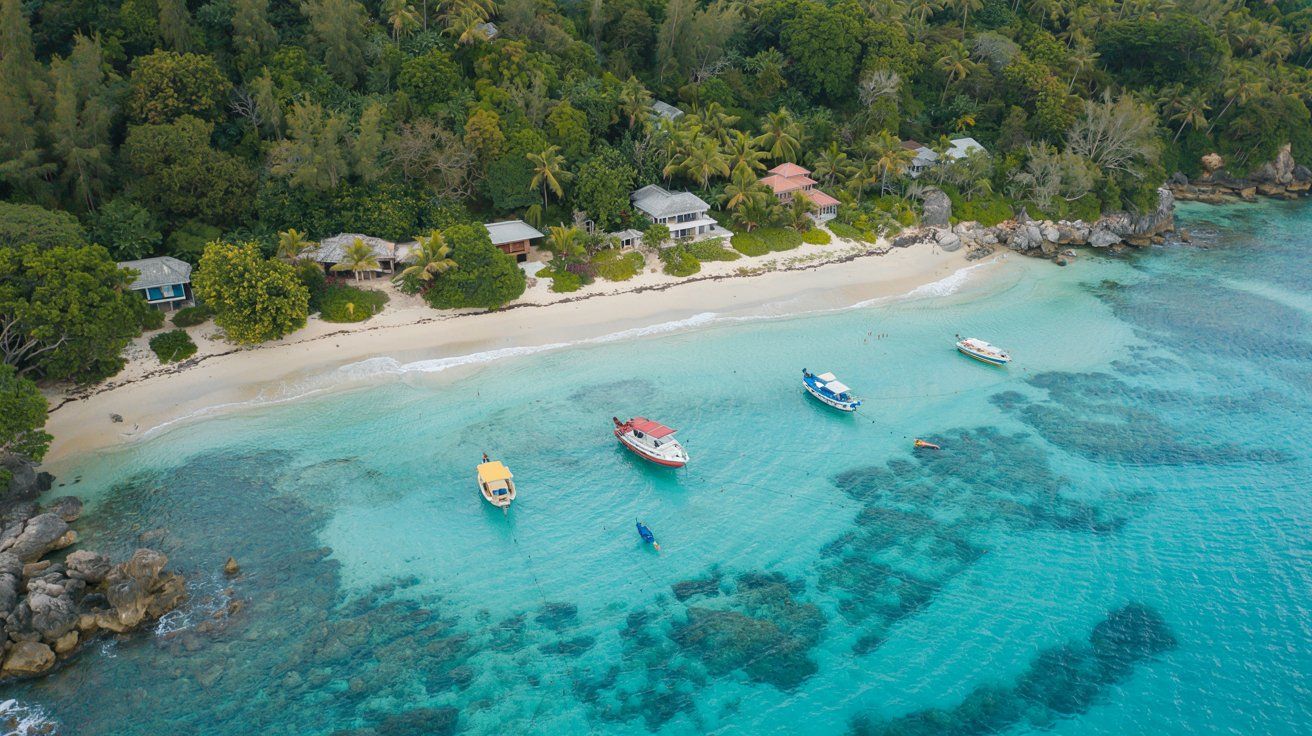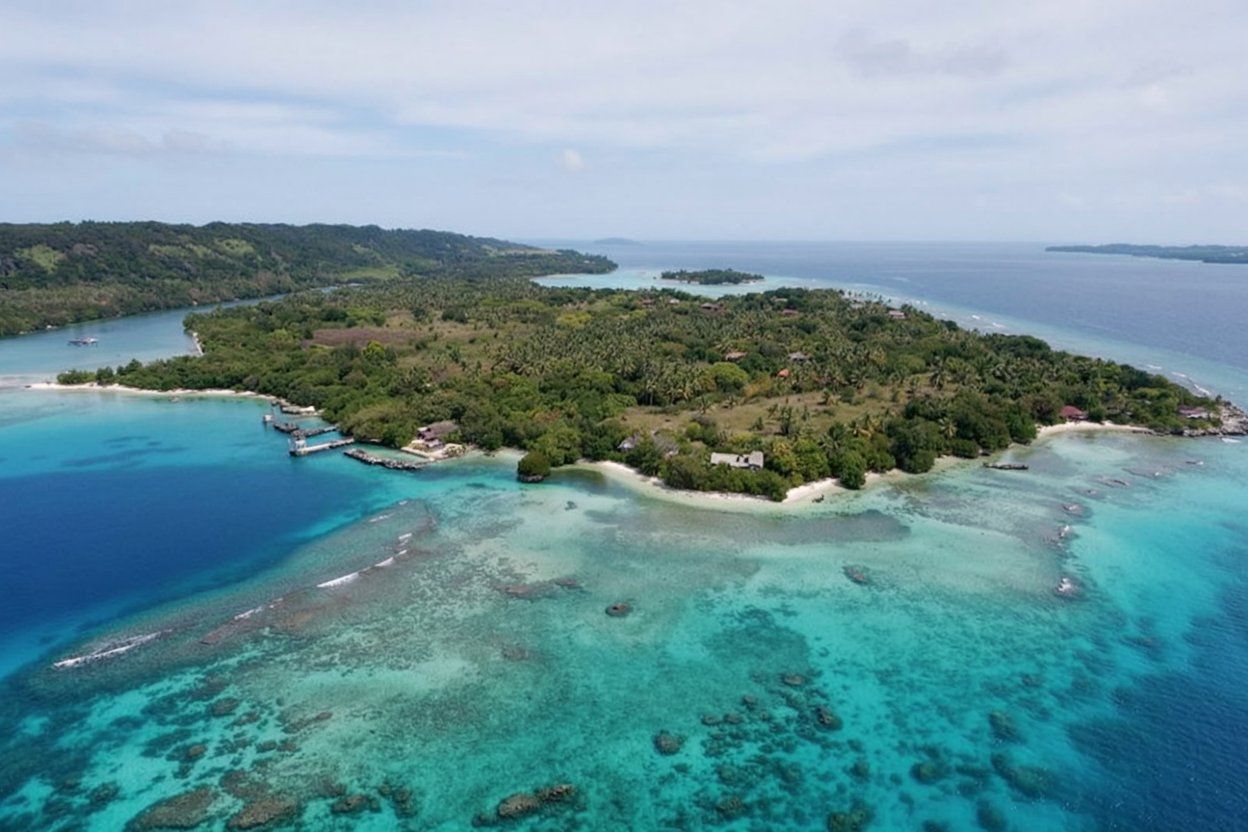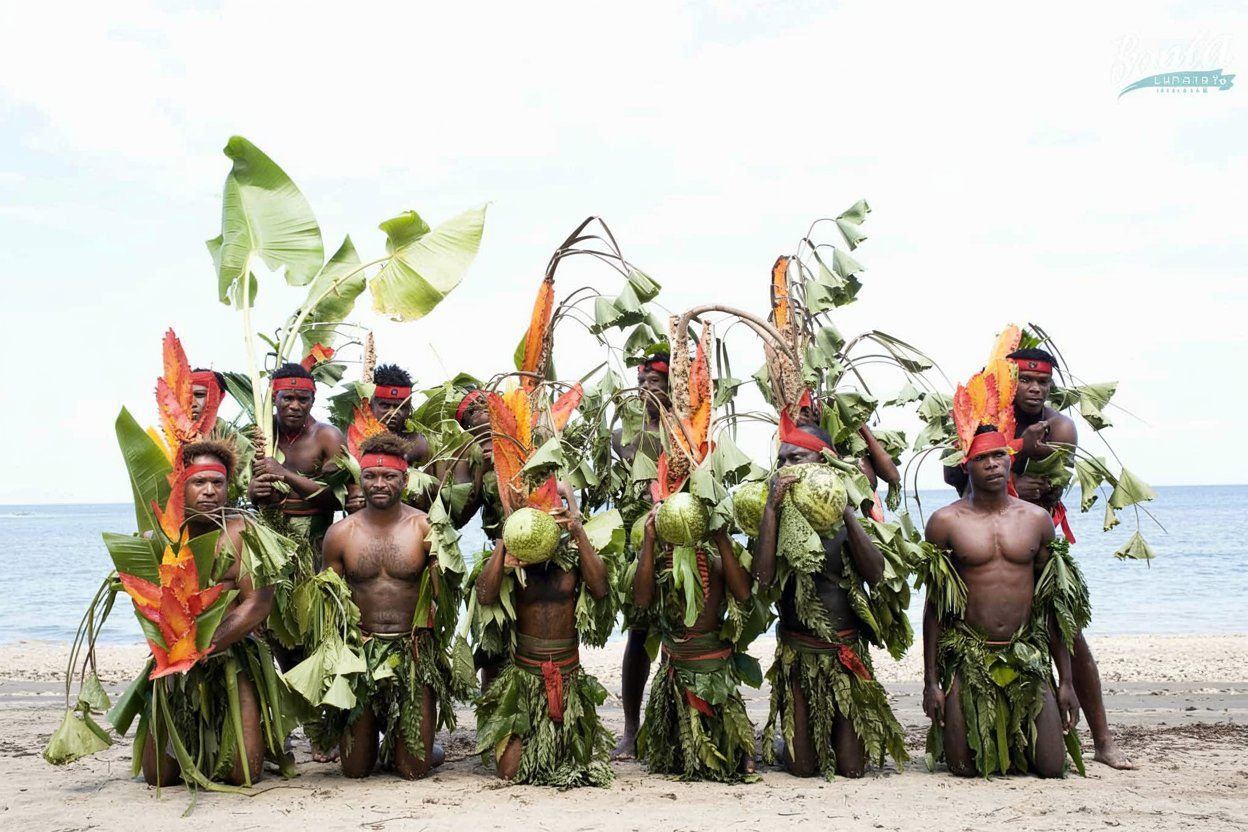Welcome to Malekula, the second largest island in Vanuatu’s South Pacific archipelago. Just a short flight from Port Vila on Efate Island, Malekula offers a striking contrast to the more visited parts of Vanuatu. With over 30 languages spoken across the island, Malekula is one of the most culturally diverse places in Vanuatu, making it a fascinating destination for travelers seeking authentic experiences.
As you explore this hidden gem, you’ll discover black sand beaches, ancient stone structures, and towering cliff faces in the northeast region. The island is surrounded by crystal-clear waters perfect for snorkeling, with offshore islands waiting to be explored.
Get a discount of 15% to 70% on accommodation in Malekula! Look for deals here:
Malekula Hotels, Apartments, B&Bs
Unlike the more tourist-heavy Tanna Island or Espiritu Santo Island, Malekula provides opportunities for multi-day treks from coast to coast and visits to remote traditional villages where time-honored customs remain intact.
How to Get to Malekula
Getting to Malekula is part of the adventure! This beautiful island in Vanuatu can be reached by both air and sea from the main hubs of Port Vila and Santo.
By Air: Regular flights connect Port Vila to Malekula, taking approximately 45 minutes. These flights aren’t daily, so it’s best to plan ahead. Air Vanuatu operates these routes, but schedules can change seasonally.
By Sea: Cargo boats travel from Santo to Malekula daily, offering a more scenic journey. Though longer than flying, this option gives you beautiful ocean views and a chance to meet locals.
Once you arrive at Malekula, you’ll likely need to get to Lakatoro or Norsup, the main settlements. Be prepared for a fairly long walk from the airport or dock if transportation isn’t arranged.
Local Transportation Options:
- Taxis are available on weekdays (less common on weekends)
- Minibuses operate mostly during weekdays
- Walking is an option for shorter distances
- Some accommodations offer pickup services (arrange in advance)
The roads connecting Lakatoro and Norsup are fairly basic, so comfortable shoes are recommended if you plan to explore on foot.
For smoother travel, consider arranging transportation ahead of time, especially if you arrive on weekends when public transport options are limited.
What to See in Malekula
Malekula Island offers you a genuine glimpse into rural Vanuatu with its rich cultural heritage and natural beauty. The island is home to diverse cultural groups including the Small Nambas and Big Nambas tribes, known for their traditional ceremonies and distinctive penis sheaths worn by men.
Take a guided tour to visit ancient ceremonial grounds where you can learn about the island’s complex history. Some areas even contain secret cannibal sites that provide a fascinating, if sobering, look into past practices.
The island is surrounded by glassy reefs perfect for snorkeling and fishing. You’ll find beautiful beaches with crystal clear waters where you can relax and soak up the sun.
For an authentic experience, head to Wala island just off Malekula’s northeast coast. Here you’ll discover traditional villages and get to interact with friendly locals who maintain their customs.
Don’t miss the Dogs Head Walk, one of the most popular activities according to travelers. This coastal trail offers stunning views and access to hidden beaches.
The coconut plantations scattered across the island give you insight into local agriculture. Many locals will offer you fresh coconuts to drink as you explore.
For accommodation, choose from simple beach bungalows like those at Nawut which offer waterfront views and beautiful sunsets. These provide an ideal base for your outer island adventures.
Try local kava with villagers for a true cultural immersion. The drink plays an important role in community gatherings throughout Vanuatu.
The jungle interior offers hiking opportunities through lush vegetation, revealing hidden waterfalls and diverse wildlife unique to the island.
Read our articles on the best things to do in Malampa Province, Vanuatu and best restaurants in Malampa Province, Vanuatu for even more ideas!
Where to Stay Near Malekula
Read our article on hotels near Malampa Province, Vanuatu for the best options for your stay. Here’s a short list of some options:
If you’re looking to stay in a vacation home, apartment, BnB, or VRBO in Malampa Province, Vanuatu, we recommend you search on VRBO, Hotels.com, and Booking.com for up-to-date options.
History of Malekula
Malekula’s history is rich with cultural diversity and ancient traditions. As the second largest island in Vanuatu, it has been home to indigenous peoples for thousands of years.
The island was traditionally divided into various cultural groups, with over 30 distinct languages developing across its varied terrain. These different communities created unique customs and social structures that continue to influence life today.
European contact began in the 1600s when explorers first mapped the region. The island gained a reputation for cannibalism, which was part of ritual practices among some groups. Today, you can still find “secret cannibal sites” that offer glimpses into this mysterious past.
During the colonial era, Malekula came under joint British-French control as part of the New Hebrides. This period brought significant changes to traditional life, including the arrival of missionaries who established churches that remain important community centers.
In 1980, Vanuatu gained independence, and Malekula became part of the new nation. The island has worked to preserve its cultural heritage while developing connections to the wider world.
Traditional practices like sand drawing, custom dances, and storytelling have survived through generations. Many villages maintain their ancestral traditions while embracing aspects of modern life.
Today, you can experience this living history through cultural tours and community visits. Local guides often share stories passed down through generations, giving you a deeper understanding of this fascinating island’s past.
Get a discount of 15% to 70% on accommodation in Malekula! Look for deals here:
Malekula Hotels, Apartments, B&Bs

